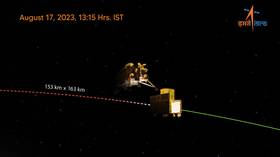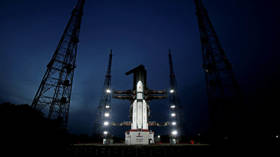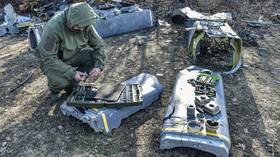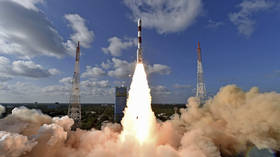Indian Moon mission reaches new milestone

The lander module of India’s lunar mission successfully separated from the propulsion module of the Chandrayaan-3 spacecraft on Thursday, the Indian space agency has announced.
The Vikram lander, named after Dr Vikram A Sarabhai, considered the father of the Indian space program, will now continue its solo journey to the Moon, while the propulsion module will remain in lunar orbit for months or even years.
The separation of the lander module marks a milestone in India’s third lunar mission. On Wednesday, the spacecraft carried out the final lunar-bound orbit reduction maneuver, ahead of Chandrayaan-3 attempting a Moon landing on August 23, according to the Indian Space Research Organization (ISRO). The forthcoming phases of the mission involve activating and validating the onboard instruments, including three pivotal scientific payloads, while the lander will engage in two successive orbit-reduction maneuvers.
“Lander Module Successfully separates from Propulsion Module today (August 17, 2023). The next Lander Module (Deorbit 1) maneuver is scheduled for tomorrow (August 18, 2023) around 1600 hrs IST,” the ISRO said in a tweet.
Former ISRO scientist Mylswamy Annadurai told the ANI news agency that when the mission lands on the Moon it “will definitely be the day for India to rejoice.”
A soft landing for Chandrayaan-3 on the lunar surface will position India among a select group of nations such as Russia, the US, and China, to have successfully accomplished the feat. Russia also currently has its own Moon mission in space, Luna-25, which is expected to land on the lunar south pole by August 21.
In 2019, India’s Chandrayaan-2 mission deployed an orbiter but its lander and rover were destroyed when it plummeted to the Moon’s surface, leaving a crater close to where the current mission is intended to land. Chandrayaan-3 aims to successfully demonstrate a soft landing on the lunar surface, showcase Vikram’s mobility on the Moon’s terrain, and simultaneously conduct scientific experiments.
Previous missions to the Moon have mainly focused on the equatorial area due to its advantageous landscape and operational circumstances. The lunar southern pole, which is being targeted by both India and Russia, remains significantly uncharted territory.
The shaded surface area there is considerably larger than that of the Moon’s northern pole and scientists have indicated that this increases the likelihood of water being present. India’s first lunar mission, Chandrayaan-1, was launched in 2008 and discovered water molecules on the dry lunar expanse, confirming that the Moon possesses an atmosphere during daylight hours.













